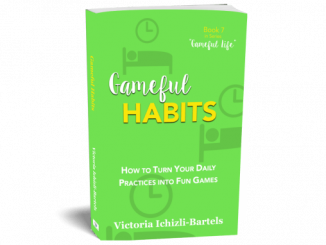
I’m passionate about play — its power and its importance. I believe that one of the worst ideas out there is the need to put away ‘childish things’ on adulthood. When we play, we explore and create things that can never come into being when we are focused on doing things right and achieving, and all the other things we focus on in our adult world.
So it’s wonderful to come across a book that embodies those principles and asks: how can we design for play within our structures of work and study? Where and how can playful experiences be better experiences? Specifically, the book focuses on three areas where play can help: in design, in learning, and in innovation. So, this book is relevant to everyone from town planners to lecturers to product designers.
Research, Frameworks and Practical Examples
It’s bookended with an introduction and epilogue that help round out the principles (and give a great analogy of play design as a melting pot of various elements). But aside from these, the book is a collection of pieces from different authors, each focused on one perspective for play design. The common themes among them are research, frameworks, and practical examples. Most are based on solid research, well-organised. The frameworks I found most interesting: often-graphical representations of key concepts, ready to use. And the practical case studies and examples of application help bring it all to life.
The compilation nature is the thing I liked most and least about the book. The differing perspectives allow a picture to emerge that’s nuanced and complex, and there isn’t the sense that one agenda is being pushed: it’s a complex area with few points of universal agreement, and this reflects that. But the other side of this coin is that the differing authors mean there’s less coherence to this as a book than many, and when the focus for one author is less relevant or less well-written, your interest can wane.
A Taste of the Book
But that’s okay; this can be seen as a book to jump around in rather than read cover to cover, and if you focus on the chapters most relevant to you, there is some fantastic content. Some of my favourites include:
- Jesper Falke Legaard’s chapter on designing meaningful play experiences, which provides a play blueprint that really helps to pull apart, examine and improve any play design
- Jess Rahbeck’s chapter on playful tension, which unites ideas of tensions and paradoxes across theories from Piaget’s to Csikszentmihalyi’s, many of which I’d not come across, and gives some very practical scales against which to consider your own play designs
- Tilde Bekker, Ben Schouten and Landa Valk’s chapter on the lenses of play card tool, which resembles Jesse Schell’s game design lenses, but with a play rather than game design focus
Anybody who designs any kind of experience, consultation or process in which they want to enhance a sense of play and reap the rewards should find this a useful and practical guide. Some of it will almost certainly speak to you more than other parts, but as that will probably differ from reader to reader, that’s fine: a great approach with this book would be read and run with the parts that apply to your practice most.
Framing Play Design: A hands-on guide for designers, learners and Innovators is available on Amazon
- Using Games to Sculpt Agency - 22nd November 2022
- Gift Horse Download - 25th April 2022
- Dungeons & Dragons & Development - 21st April 2022





Be the first to comment